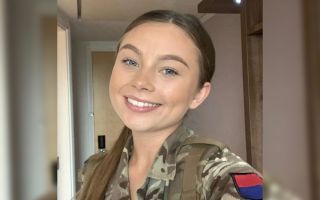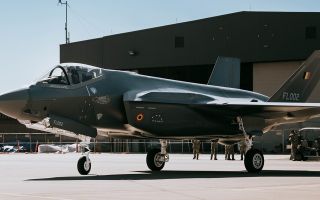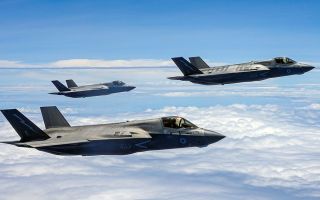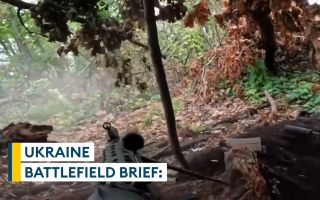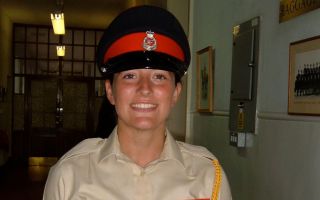My dog transformed my life: RAF veteran explains the role played by assistance dogs
A veterans charity is aiming to raise awareness about the critical support assistance dogs provide to former service personnel.
Some veterans have complained that they have been challenged over their dogs and have been refused entry to places with their canine companions, despite relying on their support.
Former RAF intelligence officer Ali Ramsay got her dog Clyde from Bravehound, a Scottish charity that supports former Armed Forces personnel, and told Forces News just how important he is to her.
"An assistance dog is not the same as a guide dog for the blind. An assistance dog is for other disabilities - whether that be mental health or physical disability," she said.
"They are there to aid you to carry out your daily life, providing the confidence to go somewhere and the security to help you face challenges in public that you might find difficult."
Ali explained that without her brown Labrador Clyde, she would not have the confidence to face some of the challenges of public life.
There are days when Ali is in a lot of pain and is uncomfortable going outside, and having Clyde there with her gives her the confidence to do that.
"There's practical help. Clyde, for example, he can pick up my keys or my stick. He's picked £5 note up for me before," she said.
"All assistance dogs are trained in certain tasks to suit the disability of the individual that has the dog."
Apart from having the comfort of a best friend by your side, an assistance dog carries out vital daily tasks.
"Clyde has transformed my life," Ali said.
"He's also a signaller to people. I walk with a stick, and you get a lot more help because people will see the dog and come up to and say 'can I help you with anything' for example in a supermarket, which can be very helpful."
However, the acceptance of assistance dogs is not universal.
"Sometimes you can be challenged in a cafe or a shop. We do carry a card, our Bravehound identity card with the dog's photo and my photo on it.
"It explains that it's an assistance dog, and generally that’s enough for people to accept that the dog should have access.
"Some areas are better than others - transportation can be quite difficult."
Ali advises dealing with these situations tactfully, saying: "The more people you can get onside and understand what an assistance dog is without confrontation, the better environment it will create for these dogs moving forward."
A dog wearing a jacket with writing is likely a working assistance dog and should be treated accordingly.
Ali stressed the importance of people being informed about assistance dogs, advising employees to check with their supervisors about policies on assistance dogs in workplaces and public transportation.
She also recommended researching charities online to understand the different jacket colours that indicate a working dog.

